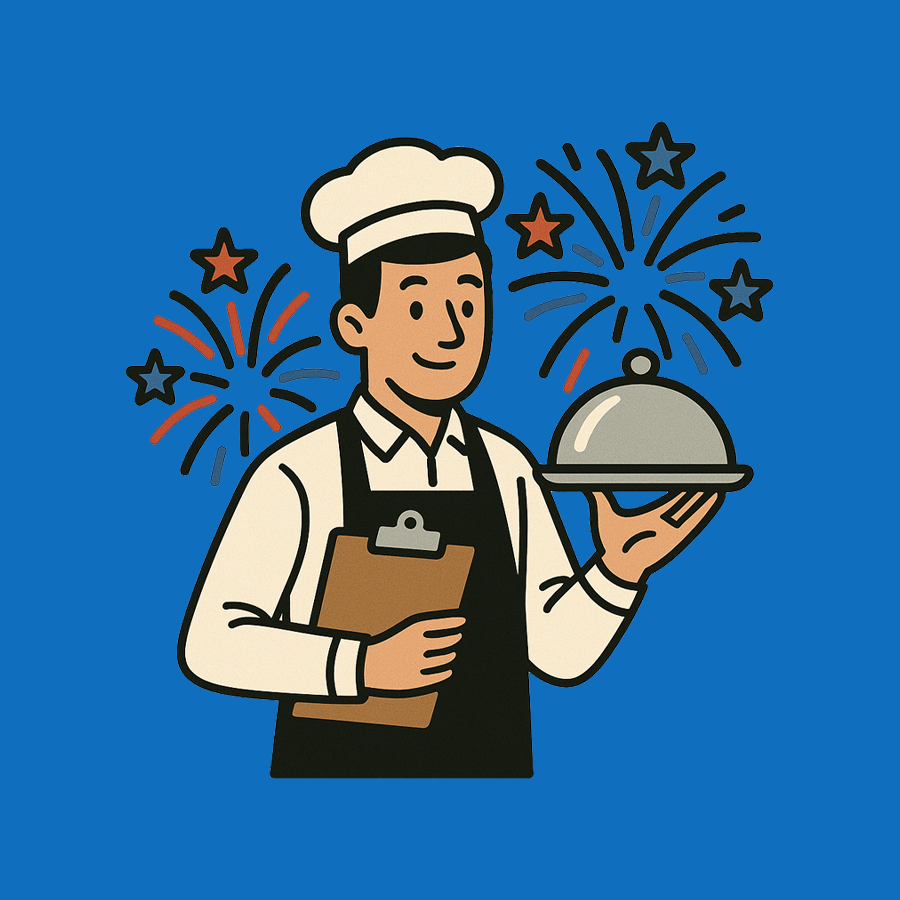Labor Day is one of the busiest holidays for casual gatherings — from backyard cookouts and community events to company picnics and private parties. And while some clients plan early, others… don’t.
Last-minute bookings are a reality of the catering business. The good news? With the right strategies, you can still pull off a polished, profitable event — even on a tight timeline.
Here’s how to simplify your Labor Day catering process without sacrificing quality, clarity, or client satisfaction.
Why Last-Minute Labor Day Events Are So Common
Labor Day sits at the intersection of “end-of-summer fun” and “we forgot to plan something.” For caterers, this means a spike in late requests, pop-up bookings, and last-minute menu adjustments.
These events often come with:
● Tight turnaround times
● Limited product availability
● Compressed staffing windows
● Minimal client direction
Still, these bookings can be worth taking — if you’ve got a system in place to handle the chaos.
Strategy #1: Offer Pre-Set Menus
When time is short, don’t reinvent the wheel. Instead of sending over a full menu for custom builds, offer 1–3 pre-set packages that capture the Labor Day spirit.
Examples:
● “Grill & Chill” BBQ Package: Ribs, grilled veggies, baked beans, cornbread
● “Backyard Bash Box:” Sandwich sliders, fruit salad, chips, lemonade
● “Plant-Based Picnic:” Grilled portobellos, couscous salad, watermelon slices
These menus reduce back-and-forth with the client and streamline prep for your kitchen — especially if you’ve already priced and sourced them before.
Tip: Keep add-ons simple (extra sides, beverages, desserts), and make your menu descriptions sound festive and ready-to-serve.
Strategy #2: Use Event Templates for Fast Setup
If you’ve done summer events before — and chances are, you have — reuse what works.
Pull from:
● Past BBQ or picnic menus
● Standard BEOs for drop-off events
● Existing prep lists and vendor orders
Make quick edits based on guest count, delivery time, or client notes instead of starting from scratch. The less time you spend building proposals, the more time you have for execution.
If you’re using software like Caterease, this is where event templates really shine — allowing you to duplicate past events and adjust the details in minutes.
Strategy #3: Keep Staffing Nimble and Focused
Interactive food stations or formal plating may not be feasible on short notice. Instead, lean into buffet-style or drop-off service, which requires fewer hands and faster setup.
A few ways to make staffing work:
● Assign your most experienced team to the most visible stations
● Cross-train staff to handle both kitchen and front-of-house if needed
● Batch-prep sides and sauces ahead of time to reduce same-day labor
Even with a small crew, thoughtful staffing can make the operation look effortless.
Strategy #4: Communicate Early and Often
When an event comes together in days (or hours), miscommunication is the biggest risk. Clear, proactive messaging keeps everyone aligned.
Best practices:
● Confirm menu, guest count, timing, and service style in writing
● Use templated emails or call scripts to reduce back-and-forth
● Assign a single team lead as the go-to contact for day-of decisions
Clients are often frazzled when planning late — staying organized on your end builds trust fast.
Strategy #5: Use the Right Tools to Stay on Track
Tight timelines are where systems and organization matter most.
Whether you’re using spreadsheets, Google Docs, or software like Caterease, aim to:
● Track changes and confirmations in one place
● Auto-generate prep sheets and invoices to save time
● Centralize staff assignments, kitchen tasks, and client info
If you’re already using Caterease, duplicate past event records, reuse templates, and auto-fill documents like BEOs and kitchen sheets — so nothing falls through the cracks.
Final Thoughts
Labor Day bookings don’t always arrive on time — but with the right approach, your team can handle late events with speed, confidence, and professionalism.
Keep menus simple, reuse your best templates, over-communicate, and lean on tools that reduce manual effort. That way, you can turn last-minute requests into repeat clients — and make a strong impression, even under pressure.
After all, in catering, the best systems are the ones that hold up when things get hectic. Labor Day is your chance to prove just how well yours work.

